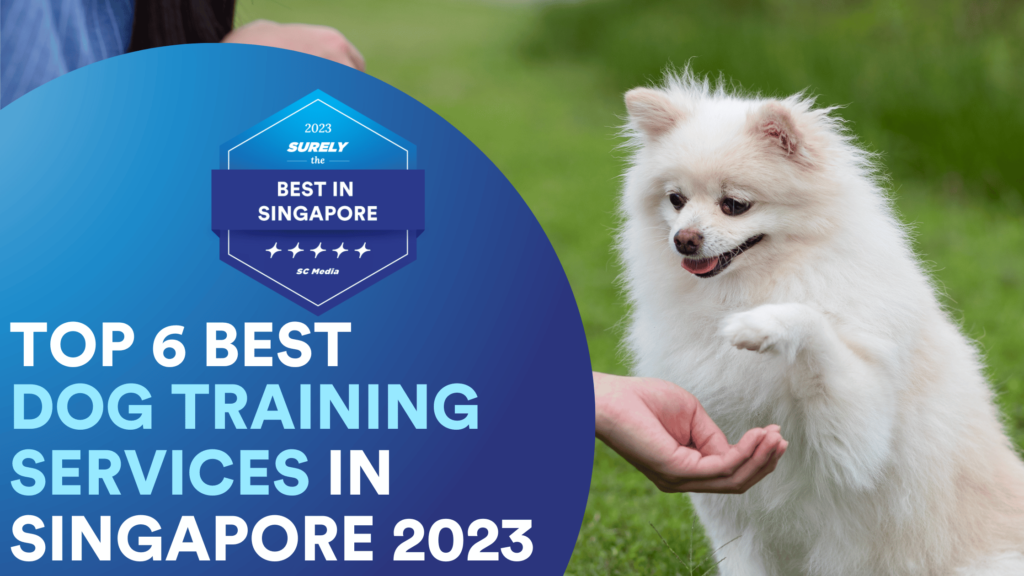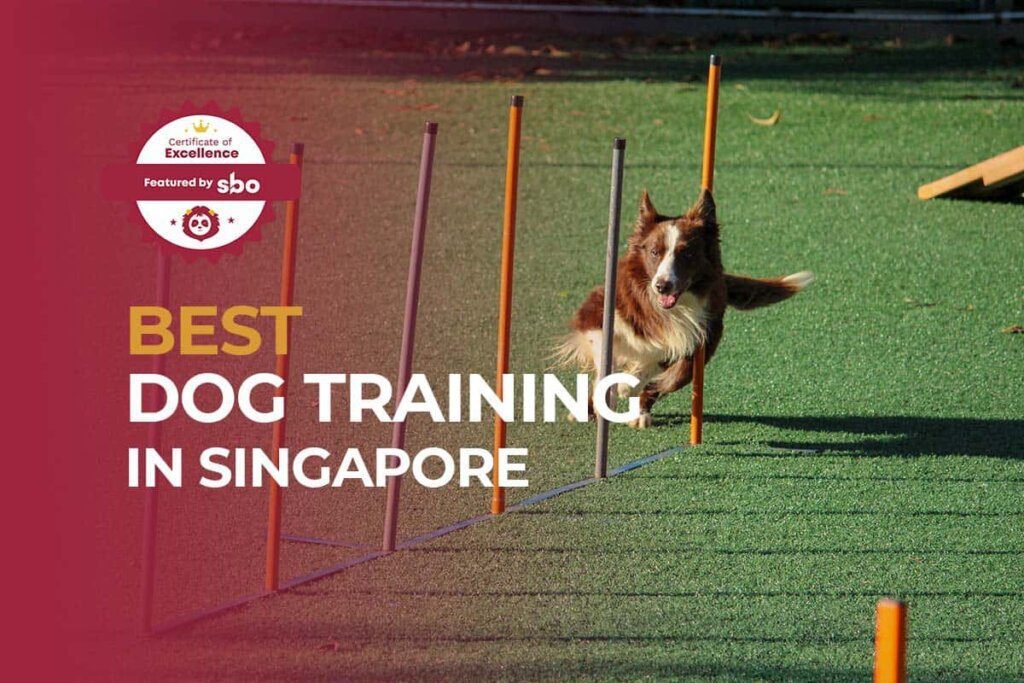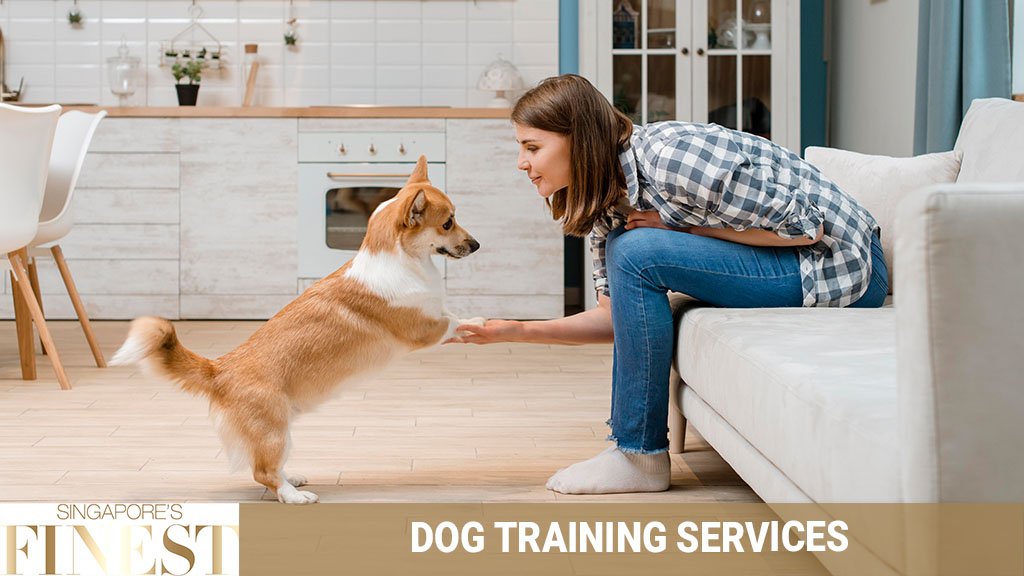Table of Contents
If you’re a dog owner in Singapore, you know that ensuring your furry friend is well-behaved and obedient is essential for a harmonious household. But with so many dog training techniques out there, it can be overwhelming to decide which one is the most effective. In this article, we will explore the various dog training techniques that have proven to be successful in Singapore. From positive reinforcement to clicker training, we’ll guide you through the strategies that will help you build a strong bond with your canine companion and set them up for a lifetime of good behavior.

Choosing the Right Dog Trainer
When it comes to training your beloved canine companion, finding the right dog trainer is crucial. With so many options available, it can be overwhelming to make a decision. However, by following a few simple steps, you can easily find a dog trainer that will understand your dog’s needs and help them reach their full potential.
Researching Local Dog Trainers
Start by researching local dog trainers in your area. Look for trainers who have experience with your dog’s breed or specific training needs. You can find this information on their websites or by reaching out to them directly. It’s important to choose a trainer who has the knowledge and expertise to handle your dog’s specific needs.
Reading Online Reviews
Another helpful step in choosing the right dog trainer is reading online reviews. These reviews can provide valuable insights into the trainer’s training methods, effectiveness, and overall customer satisfaction. Pay attention to both positive and negative reviews to gather a well-rounded perspective. Keep in mind that every dog and owner is unique, so a trainer who works well for one may not necessarily work for another.
Asking for Recommendations
Don’t underestimate the power of word-of-mouth recommendations. Reach out to fellow dog owners, friends, or family members who have successfully trained their dogs and ask for recommendations. Hearing about their personal experiences can give you a better idea of what to expect from a specific trainer. Plus, you may even discover trainers or training methods you weren’t aware of before.
Positive Reinforcement Training
One highly effective and widely used training technique is positive reinforcement training. This training method focuses on rewarding desirable behaviors rather than punishing undesirable ones. By using positive reinforcement, you can create a positive and rewarding environment for your dog, which leads to faster and more enjoyable learning.
Understanding Positive Reinforcement
Positive reinforcement training relies on rewarding your dog for performing desired behaviors. This can include giving them treats, praise, or access to a favorite toy as a form of positive reinforcement. The goal is to associate the desired behavior with a positive consequence, making your dog more likely to repeat it in the future.
Using Treats as Rewards
Treats are often used as a powerful tool in positive reinforcement training. Dogs love food, and utilizing treats as rewards can motivate them to learn and follow commands. However, it’s important to choose treats that are healthy and appropriate for your dog’s diet. Using small, bite-sized treats will prevent your dog from becoming too full or losing interest during training sessions.
Clicker Training
Clicker training is a specific type of positive reinforcement training that utilizes a handheld device called a clicker. The clicker makes a distinct clicking sound when pressed, and it serves as a conditioned reinforcer. By pairing the clicker’s sound with a reward, such as a treat, your dog learns to associate the clicker with positive reinforcement. This method allows for precise timing and clear communication during training sessions.
Crate Training
Crate training is a valuable skill for any dog and owner. It provides a safe and comfortable space for your dog while also aiding in house training and preventing destructive behaviors. Following a step-by-step approach, you can introduce your dog to the crate and gradually build their comfort and acceptance.
Introduction to Crate Training
The first step in crate training is introducing your dog to the crate itself. Start by placing the crate in a quiet area of your home, and allow your dog to explore it at their own pace. You can make the crate more inviting by placing some treats or toys inside. Avoid forcing your dog into the crate as this may create negative associations.
Selecting the Right Crate
Choosing the right crate is essential for successful crate training. Consider your dog’s size, breed, and future growth when selecting a crate. Ideally, the crate should be spacious enough for your dog to stand, turn around, and lie down comfortably. It should also be well-ventilated and secure to ensure your dog’s safety.
Gradual Introduction to the Crate
Once you’ve selected the crate, begin introducing your dog to spending short periods of time inside. Start by leaving the crate door open and enticing your dog with treats or toys to enter voluntarily. Gradually increase the duration of time your dog spends in the crate, always ensuring they have positive experiences. With patience and consistency, your dog will start to view the crate as their own safe and cozy space.
Obedience Training
Obedience training is an essential part of raising a well-behaved and obedient dog. By teaching them basic commands and using effective training techniques, you can establish a strong bond and improve communication between you and your furry friend.
Teaching Basic Commands
Start by teaching your dog basic commands such as “sit,” “stay,” and “lie down.” Use positive reinforcement techniques, such as treats or praise, to reward your dog for performing these commands correctly. Break down each command into small steps, and practice regularly in short training sessions. Be patient and consistent, and remember that each dog learns at their own pace.
Using Hand Signals
In addition to verbal cues, incorporating hand signals into obedience training can be highly beneficial. Dogs are visual creatures, and they often respond well to these non-verbal commands. For example, you can use a raised hand palm facing upwards as a signal for “sit.” Remember to pair each hand signal with the associated verbal cue, allowing your dog to understand and respond to both.
Training for Recall
Teaching your dog to come when called, or recall, is vital for their safety. Start in a quiet and familiar environment, such as your backyard, and use a long leash for added control. Call your dog’s name followed by a positive command, such as “come” or “here.” When they come to you, reward them with treats and praise. Gradually increase the distance and distractions to reinforce the recall command in various situations.

Socialization Training
Proper socialization is key to raising a confident and well-behaved dog. By exposing your dog to different environments, introducing them to other dogs, and teaching them how to handle various situations, you can help them develop positive social skills.
Exposing Your Dog to Different Environments
Start by gradually exposing your dog to various environments and situations. Take them on walks in different neighborhoods, visit parks, and even introduce them to different surfaces such as sand or water. The goal is to expose your dog to new sights, sounds, and smells in a controlled and positive manner.
Introducing Your Dog to Other Dogs
Socializing your dog with other dogs is essential for teaching appropriate canine behavior. Begin by arranging controlled meetings with calm and well-behaved dogs. Allow them to approach each other slowly while closely monitoring their body language. Reward positive interactions with treats and praise, and be mindful of any signs of discomfort or aggression.
Handling Different Situations
Finally, socialization training should also include teaching your dog how to handle different situations, such as encountering cyclists, joggers, or loud noises. Expose your dog to these scenarios gradually and reward them for remaining calm and composed. By doing so, you’ll help your dog become more confident and better equipped to handle everyday challenges.
Leash Training
Leash training is crucial for ensuring a safe and enjoyable walking experience for both you and your dog. By selecting the right leash and collar, teaching loose leash walking, and addressing pulling behavior, you can establish good leash manners.
Choosing the Right Leash and Collar
When it comes to choosing a leash and collar, consider the size and strength of your dog. For smaller breeds, a lightweight fabric leash and a well-fitted collar are usually sufficient. Larger or stronger dogs may benefit from a sturdy, nylon leash and a harness for added control and comfort. Avoid using choke chains or prong collars as they can cause discomfort and potentially harm your dog.
Teaching Loose Leash Walking
Loose leash walking refers to your dog walking calmly beside you without pulling or straining on the leash. Start by using positive reinforcement techniques, rewarding your dog for walking close to you and maintaining a loose leash. If your dog starts to pull, stop walking and wait for them to come back to your side. Resume walking and continue to reward them for good behavior.
Dealing with Pulling
If your dog consistently pulls on the leash during walks, there are several methods you can try to address this behavior. One effective technique is the stop-start method. When your dog pulls, immediately stop walking and wait for them to return to your side. Once they do, continue walking. Consistency and patience are key to successfully address pulling behavior.

Behavior Modification
Behavior modification techniques are valuable tools for addressing and correcting problem behaviors in dogs. By identifying problem behaviors, understanding the difference between positive and negative reinforcement, and utilizing counterconditioning and desensitization techniques, you can help your dog overcome unwanted behaviors.
Identifying Problem Behaviors
The first step in behavior modification is identifying and understanding the problem behaviors your dog is exhibiting. These can range from aggressive behavior, excessive barking, or separation anxiety. Observe your dog’s behavior patterns and seek professional advice if necessary. Remember, every dog is unique, and what may be considered a problem behavior for one dog may not be the same for another.
Positive vs. Negative Reinforcement
Positive reinforcement involves rewarding your dog for desired behaviors, while negative reinforcement involves removing something unpleasant to encourage desired behaviors. It’s essential to use positive reinforcement techniques whenever possible, rewarding your dog for exhibiting the desired behavior instead of punishing undesirable behavior. Positive reinforcement creates a positive learning environment and promotes a stronger bond between you and your dog.
Counterconditioning and Desensitization
Counterconditioning and desensitization techniques are highly effective in addressing fear or anxiety-based behaviors in dogs. These techniques involve gradually exposing your dog to the fear-triggering stimulus while pairing it with positive experiences, such as treats or playtime. The goal is to change your dog’s emotional response to the stimulus, gradually reducing their fear or anxiety over time.
Agility Training
Agility training is a fun and stimulating activity for both you and your dog. It involves navigating through a series of obstacles, such as tunnels, jumps, and weave poles, in a timed manner. Agility training promotes physical fitness, mental stimulation, and strengthens the bond between you and your dog.
Introduction to Agility Training
Start by introducing your dog to the equipment and the basic commands associated with agility training. Allow them to explore the obstacles at their own pace and reward them for showing interest and curiosity. This introduction phase should be relaxed and enjoyable, ensuring that your dog views agility training as a positive and exciting experience.
Equipment and Obstacle Familiarization
As your dog becomes more comfortable with the equipment, gradually introduce them to each obstacle. Begin with low jumps and easy tunnels, gradually increasing the height of the jumps and the complexity of the obstacles. Use positive reinforcement to reward your dog for successfully navigating each obstacle and always practice in a secure and controlled environment.
Building Confidence and Coordination
Agility training not only improves your dog’s physical abilities but also builds their confidence and coordination. Encourage your dog to navigate through the obstacles independently, providing guidance and support when needed. Celebrate small victories and progress, and remember that practice and patience are key to developing your dog’s agility skills.

Clicker Training
Clicker training is a precise and effective training technique that utilizes a handheld device called a clicker. By understanding the principles of clicker training, conditioning the clicker, and shaping desired behaviors, you can effectively communicate with your dog and enhance their training experience.
Understanding Clicker Training
Clicker training is based on the principles of operant conditioning, specifically positive reinforcement. The clicker serves as a conditioned reinforcer, making a distinct clicking sound when pressed. This sound is associated with a reward, such as a treat, and signals to your dog that they have performed the desired behavior correctly.
Conditioning the Clicker
Before using the clicker, it’s necessary to condition your dog to understand the association between the clicker sound and the reward. Start by clicking the device and immediately offering a treat to your dog. Repeat this process several times until your dog clearly understands that the clicker sound predicts a treat. Once your dog makes this association, you can start using the clicker during training sessions.
Shaping Behaviors
Clicker training allows for precise timing and clear communication during training sessions. By breaking down complex behaviors into small, achievable steps, you can shape your dog’s behavior using the clicker. For example, if you are teaching your dog to sit, you can click and reward them for simply lowering their rear end at first, gradually shaping the behavior into a complete sit. This method allows your dog to actively participate in the learning process and strengthens their problem-solving skills.
Continued Education and Practice
Dog training is a continuous process of learning and growth, requiring ongoing education and practice. Taking part in training classes, attending workshops and seminars, and regularly practicing and reinforcing learned behaviors are all essential for long-term success.
Attending Training Classes
Training classes provide structured environments where you can learn from professional trainers while socializing your dog with others. In these classes, you can refine your training techniques, address specific challenges, and receive guidance from experienced trainers. Training classes also offer opportunities for your dog to interact with other dogs, enhancing their socialization skills.
Participating in Workshops and Seminars
Workshops and seminars provide concentrated learning experiences on specific training topics or techniques. They allow you to delve deeper into areas that interest you, such as agility training or behavior modification. These events often feature renowned trainers or experts in the field, providing valuable insights and practical tips for enhancing your dog’s training.
Regular Practice and Reinforcement
Consistency is key when it comes to dog training. Regularly practice the commands and behaviors you have taught your dog to ensure they are reinforced and maintained. Find opportunities throughout your daily routine to incorporate training sessions, whether it’s during mealtime, walks, or playtime. By consistently reinforcing learned behaviors, you will strengthen the bond with your dog and ensure their training remains effective.
In conclusion, choosing the right dog trainer, utilizing positive reinforcement techniques, crate training, obedience training, socialization training, leash training, behavior modification techniques, agility training, clicker training, and continued education all play crucial roles in the successful training of your dog. By investing time and effort into their training, you can build a strong foundation of obedience, behavior, and trust, allowing you and your furry friend to enjoy a lifelong companionship filled with joy and mutual understanding.




